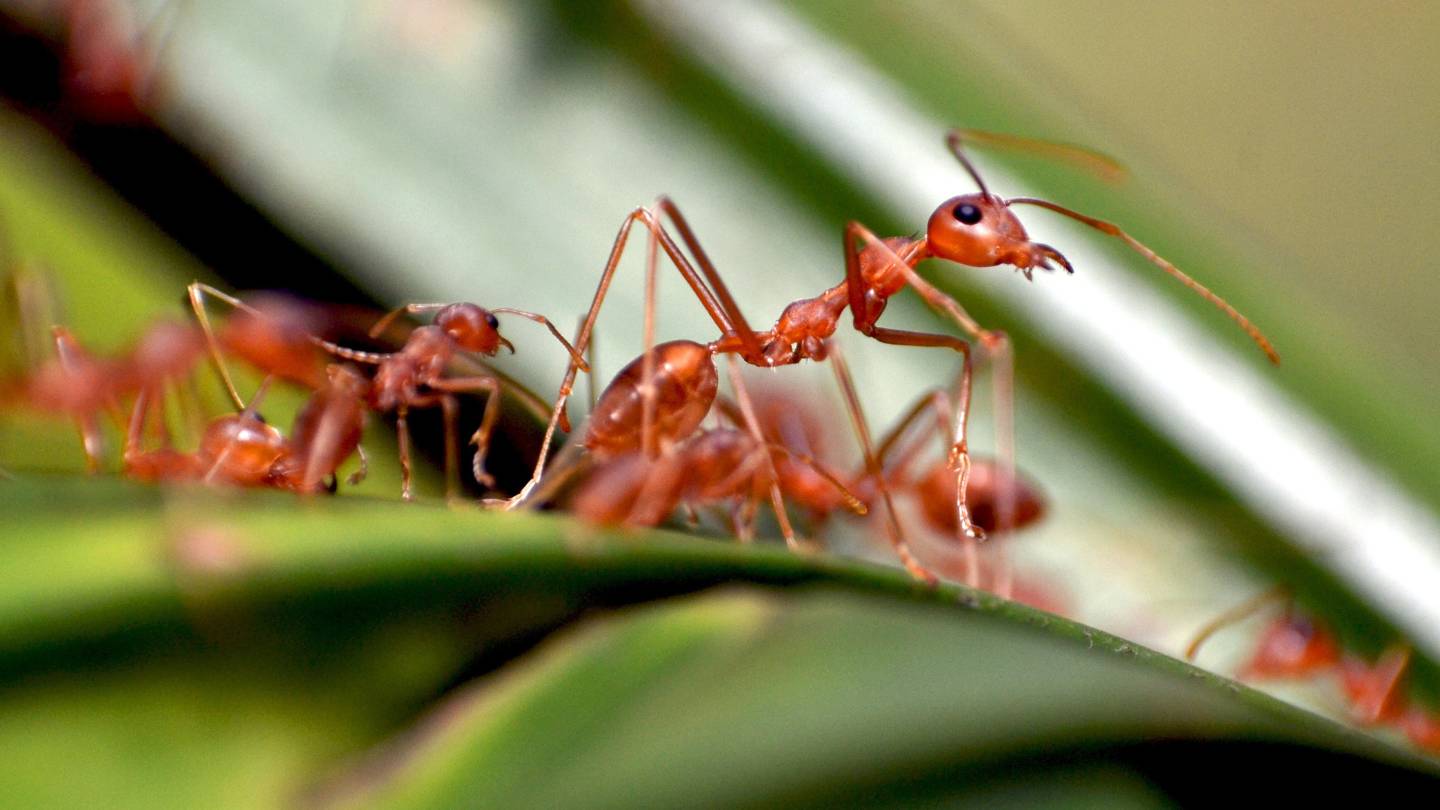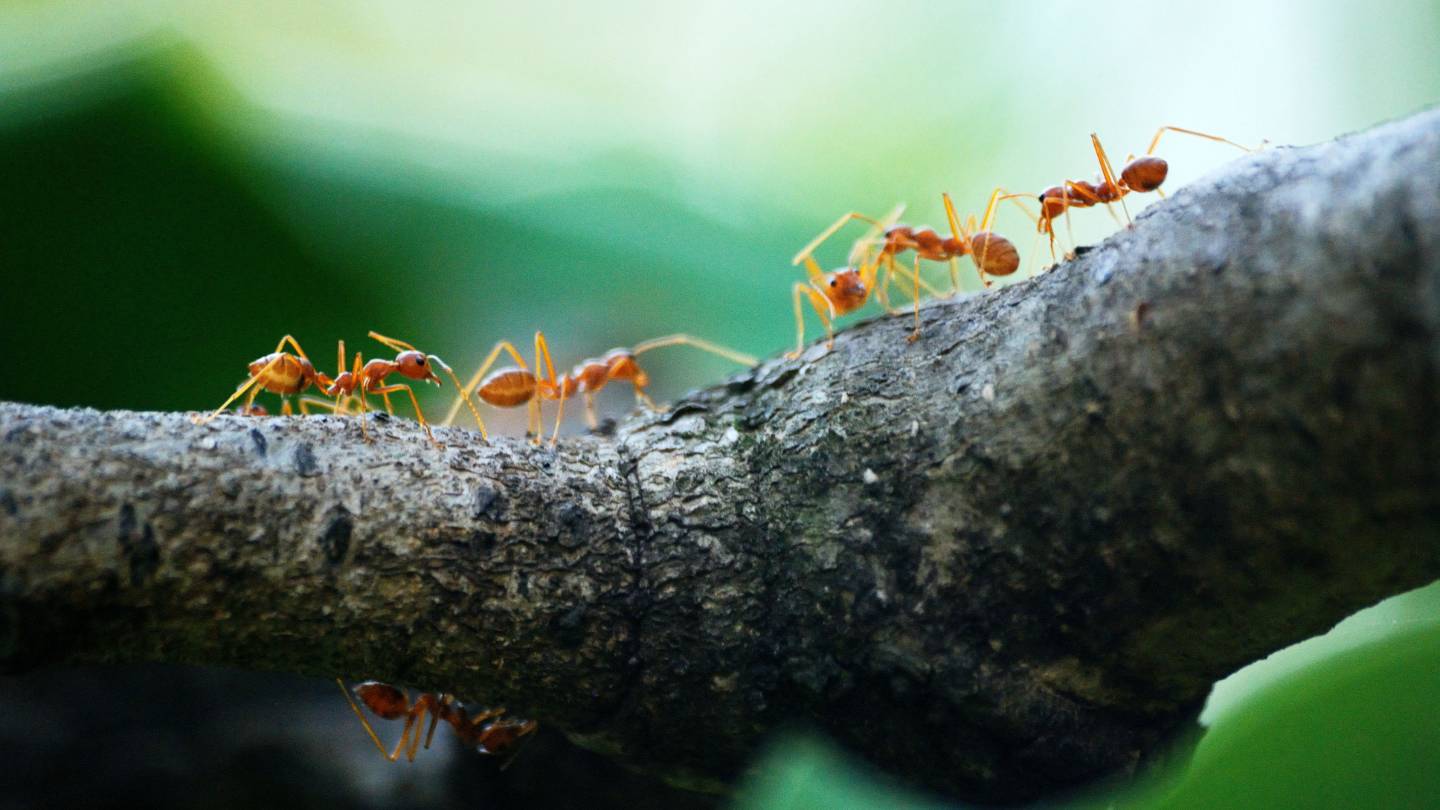As the spring season approaches in Australia, the increase in temperature awakens ants from their winter dormancy, causing them to become more active in search of food and water.
This can lead to an invasion of ants in your home and garden. To prevent a full-blown infestation, it’s essential to take proactive measures.
In this article, we will explore why ants appear in spring, the different types of ants common in Australian homes, and the steps you can take to prevent them from becoming a problem.
Let’s get straight to the point
As spring arrives in Australia, ants become more active in search of food and water, potentially leading to infestations in homes. To prevent this, take proactive steps such as fixing leaks, sealing entry points, and keeping your kitchen clean.
Natural deterrents like essential oils and vinegar sprays can help, while proper food storage and regular cleaning are crucial.
Common ant types include Pharaoh, Carpenter, and Black House ants, each posing different risks like structural damage or food contamination. If infestations persist, consider professional pest control.

Why Are There So Many Ants In The Spring?
During the cold months, ants slow down their activity and seek warm shelter to survive, often finding refuge in homes. As soon as the weather warms up in spring, ants emerge from hibernation, ready to forage for food, water, and new nesting spots.
This sudden activity can make it seem like ants appear out of nowhere. Their increased presence is due to their reproductive cycle and the need to support the colony’s growth.
Types Of Ants You May Encounter
Australia is home to various types of ants, and it’s crucial to know which ones you’re dealing with to address the issue effectively. Some of the most common ants found in Australian homes include:
Pharaoh Ant
Pharaoh ants are small, yellowish ants that often infest warm, humid areas like kitchens and bathrooms. They are notorious for nesting in hidden areas such as behind walls, inside cupboards, and even in electronic appliances.
Carpenter Ant
One of the more destructive ants in Australia, carpenter ants, can cause serious structural damage to buildings by burrowing into wood to create nests. They are black or red in colour and can be difficult to detect until the damage has been done.
Black House Ant
These tiny black ants are a common sight in Australian homes, especially in the warmer months. They are attracted to sugary foods and are often seen trailing along kitchen benches or near food sources.
Signs Of An Ant Infestation
Identifying an ant infestation early is key to preventing it from worsening. Here are a few signs to watch for:
Visible Ant Trails
Ants leave behind pheromone trails that help others in the colony follow them to food sources. If you see a line of ants moving in a coordinated manner, it indicates an established trail that leads to food inside your home.
Ant Nests Outdoors
Seeing anthills or ant mounds in your yard, especially near the foundation of your home, is a warning sign that ants may soon find their way inside. These nests are often the source of your indoor ant problem.
Ants Around Pet Food
Ants are attracted to pet food and water bowls. If you notice ants gathering around your pet’s feeding area, it’s a clear sign that they have found a food source. Keep the area clean and store pet food in sealed containers.
Frass Or Sawdust
If you spot tiny piles of sawdust near wood structures, it could indicate the presence of carpenter ants. These ants create nests inside wood by hollowing it out, similar to termites, and can cause significant structural damage if left untreated.
The Problems That Ants Cause
Ant infestations are not only annoying but can also lead to several problems around your home.
Ant Bites
Certain types of ants, like fire ants, can deliver painful bites or stings that may cause allergic reactions. In severe cases, ant bites can lead to swelling, rashes, or even anaphylaxis.
Structural Damage
Carpenter ants are particularly problematic because they burrow into wood, compromising the structural integrity of homes and buildings. If left unchecked, this can lead to costly repairs.
Electrical Wiring Damage
Ants are known to infiltrate electrical outlets and appliances, which can result in short circuits and even pose a fire hazard. Regular inspections and pest control measures can help prevent this dangerous issue.
Food Contamination
Ants are natural scavengers and can contaminate food by crawling through trash and then onto food surfaces. This can lead to the spread of bacteria and other pathogens, putting your family’s health at risk.

Simple Ways To Prevent Ants This Spring
To keep your home free of ants this spring, it’s essential to take proactive steps. Here are some simple but effective methods for preventing ants from entering your home.
Fix Leaks And Remove Moisture
Ants are attracted to moist environments, so it’s crucial to fix any leaks in your home. Check under sinks, around windows, and in the bathroom for signs of moisture. Repair any leaks as soon as possible to make your home less appealing to ants.
Use Natural Remedies
Essential oils like peppermint, tea tree, and eucalyptus are excellent natural ant repellents. You can spray these oils around entry points or areas where you’ve seen ant activity. Additionally, cinnamon is a natural deterrent – sprinkle it around windows and doors to keep ants out.
Keep Your Kitchen Clean
A clean kitchen is one of the most effective ways to prevent ants. Make sure to wipe down counters, sweep the floor, and store food in airtight containers. Even small crumbs can attract ants, so regular cleaning is essential.
Vinegar Spray
Vinegar is another natural ant deterrent. Mix equal parts vinegar and water in a spray bottle and use it to clean surfaces where you’ve seen ants. The strong smell disrupts their pheromone trails, making it difficult for them to navigate.
Seal Entry Points
Ants can enter your home through the tiniest cracks and gaps. Inspect the exterior of your home, paying close attention to windows, doors, and walls. Use caulk to seal any gaps and install weatherstripping to block their entry.
Store Food Properly
Ensure all food items are kept in tightly sealed containers to prevent ants from accessing them. This includes pantry items, as well as pet food. By limiting access to food, you can discourage ants from making your home their new hunting ground.
When To Call A Professional
Sometimes, despite your best efforts, an ant infestation can get out of hand. In these cases, it’s best to seek help from a professional pest control service. Trained experts can identify the type of ant, locate the nest, and safely eliminate the infestation. Additionally, professionals can help set up long-term preventative measures to keep your home ant-free.
Conclusion
As spring approaches, taking proactive steps to prevent ants from invading your home is crucial. By understanding why ants become more active in the spring and knowing the signs of an infestation, you can effectively prevent ants from becoming a problem.
Start by fixing any leaks, sealing entry points, and using natural deterrents like essential oils and vinegar. Keeping your kitchen and pantry clean is essential, and if the problem persists, don’t hesitate to contact a professional pest control service.
By taking these simple yet effective measures, you can enjoy a spring free of ants and keep your home safe and clean for your family and pets.
Frequently Asked Questions
Can I Use Natural Methods To Deter Ants?
Yes, natural methods can be highly effective in deterring ants. Substances like white vinegar and cinnamon act as natural ant deterrents. Cleaning surfaces with vinegar and water solution and strategically placing cinnamon in ant-prone areas can help discourage their presence without harmful chemicals.
What Plants Can I Use To Repel Ants In My Garden?
Several plants act as natural ant repellents. With their strong fragrances, herbs like mint and lavender can create a natural barrier against ants. Planting these herbs strategically around your garden or property can deter ants and enhance the overall aesthetics of your outdoor space.
When Should I Consider Professional Pest Control For Ants?
If you’re facing persistent ant problems despite your efforts, it’s advisable to consider professional pest control. Pest control experts can identify the ant species, locate nests, and implement targeted solutions. Regular inspections by professionals can also help catch potential issues early on.
How Can I Make Effective Diy Ant Baits?
Creating DIY ant baits is a cost-effective way to control ant infestations. Mix borax with a sweet substance like honey or syrup to attract ants. Place these baits where ants are commonly seen, ensuring they are out of reach for pets and children. The ants will carry the bait back to their colony, effectively managing the infestation.
Are Routine Inspections Necessary For Ant Prevention?
Yes, routine inspections are crucial for ant prevention. Regularly check for signs of ant activity, such as trails, nests, or entry points. Swift action at the first indication of an infestation can prevent it from becoming a more significant problem. Consistent vigilance is key to maintaining an ant-free environment.

